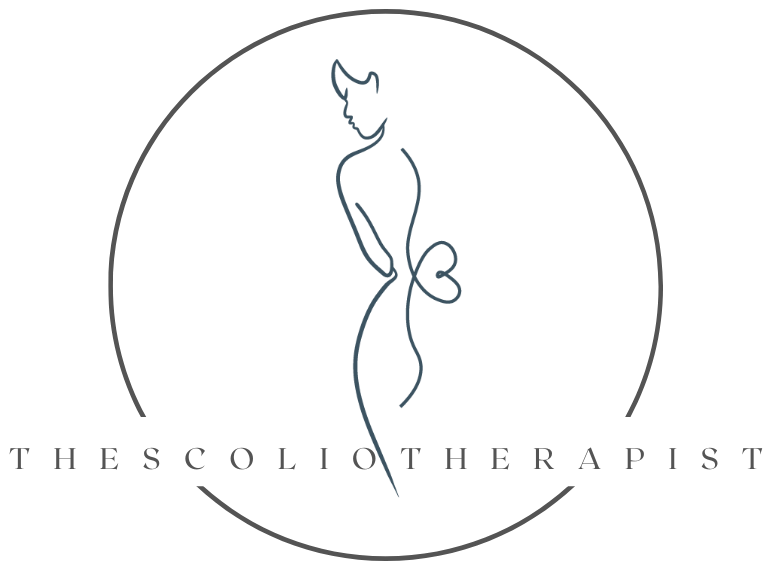Are You Afraid of Exercising With Scoliosis?
If you’re afraid to exercise because you’re not sure if it’s safe with scoliosis, you’re not alone. I often hear from potential clients who are worried that working out will progress their curve or lead to an injury. And many patients are told by their doctors that exercising with scoliosis isn’t safe, despite all the evidence to the contrary.
I’ve also heard from many patients who tried exercising but ended up getting hurt because they didn’t have any reliable information about how to exercise in a way that was safe for their spine. They had a bad experience following an exercise program off the internet or working with a trainer who wasn’t familiar with scoliosis.
Exercise offers countless physical and mental health benefits for everyone, including scoliosis patients. But it’s not always easy to figure out how to exercise safely if you have scoliosis. So today, I’m going to talk about why and how to exercise with scoliosis so you can feel confident participating in strength training, yoga, Pilates, or anything else you want to do.
Myth: Exercising With Scoliosis Isn’t Safe
Unfortunately, too many scoliosis patients still hear from well-meaning friends, family members, and even doctors that it’s not safe to exercise or with scoliosis. Often this advice is given in relation to strength training, but some “experts” will say that any form of exercise is unsafe for a scoliosis patient.
But this simply isn’t true. In fact, exercising and building strength are some of the best things you can do to improve your health and support your spine. A sedentary lifestyle is far more likely to cause your curve to progress than an active one.
Find Your Ideal Exercise Setup
If you want to experience all the benefits of exercise, start here:
Create a safe space for exercising: You get to determine what a safe space looks like for you. Some people prefer to work out at home whereas others like to exercise in a small group.
Set expectations: If you choose to work out in a class or with a trainer, be upfront about your scoliosis and set your personal boundaries. For example, if you don’t want a yoga instructor to try to push you too far into a pose, tell them before class starts.
Consider finding a specialist: Working with a scoliosis specialist (in person or online) can be a good way to learn more about your curve and figure out the best ways to support your spine.
The best exercise environment and program is the one that works best for you, so take your personal preferences and needs into account.
Work Within Your Limitations
You can exercise safely with scoliosis, but you will probably have some limitations that people without scoliosis don’t have. So before you start your workout program, identify your personal limitations. Physical limitations aren’t universal. For example, you might enjoy lifting heavy weights but avoid long-hold stretching whereas someone else’s limitations may be the exact opposite.
Working with a scoliosis specialist is an excellent way to figure out your limitations. A specialist can help you understand your curve and the unique ways it affects your body. Once you know that, you can determine which exercises are right for you and which aren’t.
Exercising Safely With Scoliosis
It’s very important to avoid end-range-of-motion movements that feed your curve (exaggerate your concavities and convexities):
Bending over toward the floor (i.e., the Adam’s forward bend test for scoliosis)
Bending backward (e.g., cobra or bow in yoga/swan in Pilates)
Side-bending (e.g., mermaid in Pilates, or stretching by bending over to one side or the other)
Rotation (e.g., turning to look behind you)
If you are a dancer or an experienced yogi who doesn’t have issues with end-range-of-motion movements, you can likely continue doing them safely. But avoid this level of movement when you’re just beginning to exercise. And remember, it’s always best to work with a specialist to get the most accurate and personalized advice.
Learn How to Exercise Safely
If you’re ready to start exercising, I’ve got a free video for you: 10 At-Home Exercises for Scoliosis. This video includes safe and effective exercises designed to improve strength, elongation, balance, and alignment. All of them can be done at home with no special equipment, and the video includes instructions on modifying each exercise to make it more or less challenging. Get your free workout video here!
If you want expert support and a customized exercise plan that’s designed for your curve, join The Scoliosis Strength Collective. This is my small-group coaching program where you’ll learn more about your curve and how to work out safely. You’ll get all the information you need to work out at home or at the gym, whichever you prefer. Plus, you can get encouragement and support from other people who know exactly what it’s like to live with scoliosis. Get all the details about The Scoliosis Strength Collective.
If you enjoyed this episode, please leave a rating and make sure you’re subscribed to the podcast to get every episode when it airs.
Resources Mentioned
10 At-Home Exercises for Scoliosis
